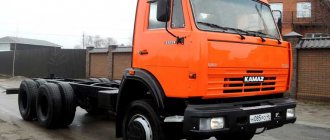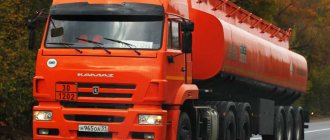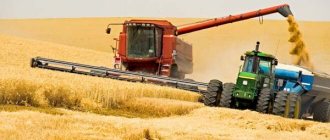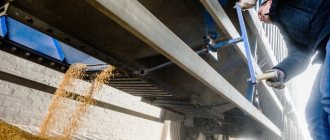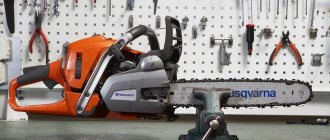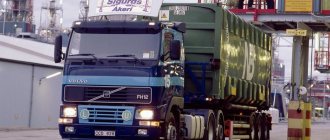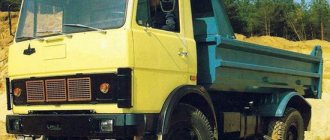What vehicles can be considered trucks?
Trucks are considered to be vehicles whose main purpose is cargo transportation. It is not for nothing that in Western countries, in particular the USA, the word truck is understood as pickup trucks - jeeps with an open body. After all, they are also called upon to transport goods. Thus, trucks include not only category “C” vehicles, but also more compact vehicles - vans on passenger chassis, for example.
Based on the purpose of creating these vehicles - transporting goods - all trucks are commercial vehicles. They can be equipped with open or closed bodies of various shapes and configurations. They can move cargo in a trailer or transport them in a hitch. But do not confuse the concepts of trucks and special equipment. Although some trucks belong to special-purpose equipment, for example, a concrete mixer or a crane.
Features of freight transport classifications
Freight transport has its own classification. Trucks are divided into classes according to:
- gross vehicle weight;
- designs;
- body type;
- composition of the vehicle;
- engine type;
- wheel formula.
These are the main criteria, but there are many more of them. After all, trucks are a wide class of vehicles. For example, mining trucks are a separate class of vehicles that are intended for use only in mining enterprises. But construction dump trucks are practically no different from simple ones.
Types of trucks by weight
One of the important technical characteristics of trucks is the maximum weight of cargo allowed for transportation, it is called the carrying capacity. It can be small - from 0.5 to 2 tons; medium - from 2 to 5 tons, large (5 - 16 tons), especially large (from 16 tons).
If you add the mass of the vehicle itself to the carrying capacity, you get the total mass of the truck. Based on gross weight, the following classification of trucks is used:
- up to 1.2 tons. These are small vans, station wagons for local transportation of products, household furniture, building materials, etc.;
- from 1.2 – 3 tons. These are light trucks, pickups;
- from 3 – 8 tons. The vehicles are designed for so-called “last mile” delivery. These are usually city delivery trucks for delivering goods around the city or to nearby villages. They are maneuverable enough for driving around the city, while also having good capacity;
- from 8 – 14 tons. Such models have different car body options, which significantly expands the scope of their application;
- from 14 – 20 tons. This includes 2-, 3-, 4-axle vehicles, trucks and special equipment;
- from 20 – 40 tons. These are road trains, consisting of a tractor and a semi-trailer, which can transport heavy loads over long distances;
- more than 40 tons. This includes trucks and trucks with three or more axles for long-distance transportation (including international), as well as quarry and special vehicles for transporting bulk materials. For example, most articulated dump trucks fall into this category.
But the classification of cars is not the same everywhere. For example, in the USA, trucks are divided into eight classes based on gross weight:
- Class 1 – maximum vehicle weight up to 2,722 kg. These are not only station wagons, but also middle-class pickups, such as the Mitsubishi L200 or Ford Ranger
- Class 2 includes large Toyota Sequoia, Ford F-250, and light commercial vehicles. The weight of cars in this segment is up to 4,536 kg.
- Class 3, class 4, class 5 – the mass step of these categories is less than 2 tons. Thus, the third class includes cars from 4.54 to 6.35 tons, the 4th class - from 6.35 to 7.26 tons, and the fifth - 7.26 to 8.85 tons.
- Class 6 – trucks weighing up to 11.8 tons belong to the sixth category. These are already full-fledged trucks with add-ons.
- Class 7 – trucks with heavier bodies and a maximum permissible weight of up to 15 tons.
- Class 8 – vehicles with a gross weight of over 15 tons, including all truck tractors.
Types of trucks by number of axles
When constructing roads, their characteristics also include the load they can withstand. Therefore, for trucks moving on public roads, an important parameter is how the vehicle transfers the load of the total mass to the road surface.
The traffic rules establish requirements for axial loads, i.e. the force with which each axle of the car presses on the road. This load is measured in tonnage forces (TF). The maximum allowable is 11.5 tons, but there are roads with a requirement of 10 or 6 tons. Consequently, a machine with a total weight of 22 tons, for example, a 25-ton truck crane, will not be able to meet these requirements with a biaxial design.
Therefore, trucks, depending on weight and purpose, are produced:
- biaxial;
- triaxial;
- four-axle;
- multi-axis (five or more).
Types of freight vehicles by body type
Trucks are produced for a wide range of tasks. But even the main purpose of trucks - transporting goods - requires different conditions, and therefore different bodies. It is customary to classify cars into three main groups: chassis, open and closed body type. There are also special ones, but most of them, again, are closed and combined options - when, for example, an open flatbed truck is equipped with a KUNG or a workshop.
A chassis is a type of truck that the manufacturer produces without a specific superstructure. This is essentially a cabin with a frame coming out of it. On its basis, third-party organizations are already manufacturing equipment - firefighting tankers, refrigeration units, tow trucks and other special equipment.
The open body type includes:
- flatbed trucks - they have sides installed along the perimeter of the platform to hold the load. These include crane and manipulator installations;
- dump trucks are almost the same as a flatbed truck, but with the ability to raise the loading platform for independent unloading;
- tow trucks, car transporters - vehicles equipped with special elements for transporting various vehicles;
- container ships, trawls - trucks for transporting goods in containers, as well as various buildings, crew trailers, etc.;
- Timber carriers, whip carriers - trucks equipped for transporting long cargo.
Almost all other types of bodies are of the closed type. It is worth noting:
- tilt vehicles are essentially the same flatbed trucks, but equipped with an awning to protect the cargo from precipitation;
- camper vans – incl. manufactured goods, isothermal and refrigerated, designed to protect cargo not only from precipitation, but also from other influences, including the creation of a special temperature regime;
- tanks for transportation of liquid cargo, gases;
- mixers for transporting concrete;
- various laboratories, research centers, generating plants;
- bodies of emergency and rescue services;
- KUNGs, shift buses on truck chassis.
Types of freight transport by composition
By composition, trucks can be single, coupled or road trains. A single vehicle is a truck in which the cab and body form a single structure. Examples of a single vehicle are an all-metal van, a dump truck, or a tow truck.
A road train differs in that it consists of a tractor and a trailer or semi-trailer. Truckers call the tractor the head, and the trailer (semi-trailer) the tail. They also began to often call tractors “trucks,” in the American manner.
A trailer or semi-trailer does not move independently because it does not have an engine. The total weight of the cargo on the trailer is distributed proportionally between its axles, and in the case of using a semi-trailer, part of the load falls on the tractor.
Classification of trucks based on other characteristics
Based on the type of fuel, all trucks can be divided into those equipped with a gasoline, diesel, gas or electric engine. It is worth special mentioning the new generation of trucks powered by battery electric motors. Imported companies produce electric trucks mainly for the utility sector, since the daily mileage of such vehicles is not very high, and there are many charging points along the way.
Trucks also differ in purpose
Like cars, trucks differ in wheel arrangement. Depending on the number of axles, trucks can be rear-wheel drive, all-wheel drive or combined. There are seven main types: 4x2, 4x4, 6x2, 6x4, 6x6, 8x4, 8x8. But special chassis can expand the variability.
The number of steerable axles also differs.
Internal organization
The design consists of 3 main parts. This is the engine, body, chassis. They are responsible for the integrity of the entire truck and uninterrupted operation.
The engine is the source of energy that is needed to move the tractor. The trucks use internal combustion units with self-ignition.
Chassis is a supporting device used to move vehicles.
These are all the parts for transmitting traction from the engine to the wheels:
- chassis;
- transmission;
- clutch;
- brake.
Truck body.
The body is the part of the car in which the cargo is located. That is, a semi-trailer. The difference between designs depends on the type of transportation.
Cabs of tractors have different dimensions. It all depends on the characteristics of transportation.
For long-distance trips, trucks have been designed with sleeping places in the cabin, a refrigerator, and compartments for storing personal belongings. The beautiful interior allows you to create pleasant living conditions.
Similar models are available from the following manufacturers:
- Volvo.
- Scania.
- Man.
- Daf.
- Renault.
- Honda.
- Mercedes.
- Tonar.
The internal structure of the van from different brands of tractors may vary slightly. Photos of the structures can be viewed on the company websites.
Which transport is most often used when transporting goods?
The most popular types of trucks for road transport are trucks. This is a tractor unit with a semi-trailer. But these cars are not one type of transport. Depending on the model, these can be curtain-sided or tilt semi-trailers. Refrigeration units are also classified as trucks.
But if you look at urban road transportation, the clear leader here will be a small-tonnage (up to 3.5 tons) tilt truck like GAZelle. Its advantages are the relatively low cost of “entry” into the market, maneuverability in urban conditions and the absence of special requirements, including the ability to control with category B power steering.
All-metal versions of light commercial vehicles, vans and pickups are in good demand. Which also do not require change for category C. This is especially related to the popularization of online shopping and delivery of orders to pick-up points of various online stores and marketplaces.
Leading manufacturers
Trucks are very popular. They are used in agricultural activities, for transporting military ammunition, and extinguishing fires. Special attention is paid to large-sized and oversized products.
Based on consumer requests, manufacturers produce tractors of different types and capacities. This was discussed earlier.
Manufacturers can be divided into two broad categories. These are domestic and foreign factories.
Russian
Domestic tractors comply with international quality standards. Transport is manufactured taking into account the climatic conditions of the country. This makes the structures resistant to heat, severe frosts, and large temperature changes.
The most popular manufacturers are:
- KAMAZ. The company is located in the city of Naberezhnye Chelny. The plant produces dump trucks, tow trucks, and truck cranes. The cars are reliable and easy to maintain. This is confirmed by numerous user reviews. Photos can be seen for free on the company's website.
- GAS. Cars are mass-produced on the territory of the Gorky Automobile Plant. Both flatbed trucks and covered tractors are created here. The average carrying capacity remains at around 5 tons. Rated engine power is 125 horsepower. GAZ products are low cost and reliable. Often these tractors are used to equip the Russian army. Transport for passenger transportation is also being developed on the basis of the manufacturer.
- ZIL. The origin of heavy-duty vehicles stretches back to the first half of the 20th century. Today, cars are used throughout the post-Soviet space. The company was one of the first to develop a hydraulic braking system and eight-cylinder engines.
Russian trucks are a combination of affordable prices and good quality.
Detailed information is visible in the video:
Foreign
Foreign factories create trucks that are known all over the world.
Popular models:
- Hino. A Japanese company that produces over 100,000 vehicles every year for transporting large products. The company develops tractors with a carrying capacity of up to 10 tons.
- Isuzu. A large machine-building enterprise that began operating in the middle of the 20th century. Previously, the plant produced buses, but a little later they began producing standard two-ton chassis. Isuzu is a leading supplier of military equipment to many countries.
- Hyundai. Small-sized vehicles for transportation over short distances are being developed on the basis of the Korean manufacturer. The products are safe, easy to maintain and operate.
- Scania. The Swedish plant produces trucks of several series. Here they develop cars for transporting products over short distances, and tractors for international transport. A line has been released for moving large items. All equipment is reliable and safe. Car accidents are unlikely if traffic rules are followed. According to truck drivers, Scania is one of the best and most powerful manufacturers. Pictures of the truck can be viewed on the company’s official free portal.
- Man. Heavy-duty vehicles, tractors for transporting bulk products, as well as trucks for transporting products weighing up to 12 tons are imported into Russia. Images of tractors can be found on the Internet.
- Ford. A famous company that has been successfully operating since 1903. During this time, more than 3 billion cars rolled off its assembly line. Among them are light-duty and large-sized fast trucks, which are today exported to many countries.
American trucks.
European, American, Asian trucks are very popular. They show excellent indicators of reliability, quality, and safety.
This means that the risk of accidents is unlikely. This is confirmed by positive reviews from truckers from different countries.
